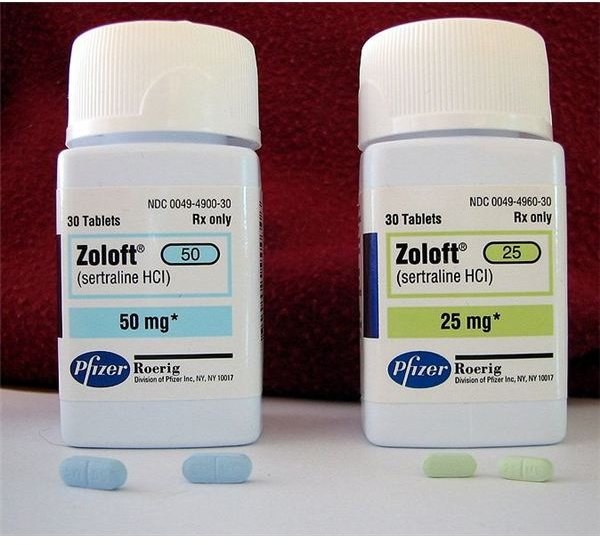Drugs for OCD: An Insight into the Drugs Used to Treat OCD
Common Drugs For OCD
Many doctors will prescribe medications “off-label” for OCD. This simply means that the medication is typically used for a disorder other than OCD, but is deemed beneficial in treating OCD symptoms. While this type of prescribing is common, there are medications that are targeted at OCD such as selective serotonin reuptake inhibitors (SSRIs) and tricyclic antidepressants. The following is a list of the most commonly used drugs for OCD and is provided by the National Center for Biotechnology Information (2009-2010).
- Clomipramine (Anafranil): a member of the tricyclic antidepressant family. It is used to treat OCD by increasing the amount of serotonin in the brain. Common side effects are drowsiness, dry mouth, nausea, vomiting, diarrhea, constipation, nervousness, decreased sexual ability, decreased memory or concentration, headaches, stuffy nose, and change in appetite or weight.
- Fluvoxamine (Luvox): a member of the SSRIs family. It is used to treat OCD and social anxiety disorder. Like tricyclic antidepressants, SSRIs bring balance to the serotonin levels in the brain. Common side effects are drowsiness, difficulty concentrating, memory problems, or confusion, dry mouth, headaches, nausea, vomiting, diarrhea, stomach pain, constipation, indigestion, gas, change in taste, decreased appetite, weight loss, nervousness, weakness, unsteadiness, and changes in sex drive or ability.
- Fluoxetine (Prozac): a member of the SSRIs family. It is used to treat depression, obsessive-compulsive disorder, eating disorders, and panic attacks. Common side effects are nervousness, nausea, dry mouth, sore throat, drowsiness, weakness, uncontrollable shaking of a part of the body, loss of appetite, weight loss, changes in sex drive or ability, and excessive sweating.
- Paroxetine (Paxil, Pexeva): a member of the SSRIs family. It used to treat depression, panic disorder, social anxiety disorder, and OCD. Common side effects are headaches, dizziness, weakness, difficulty concentrating, nervousness, forgetfulness, confusion, sleepiness or feeling ‘‘drugged,’’ nausea, vomiting, diarrhea, constipation, gas, stomach pain, heartburn, changes in ability to taste food, decreased appetite, weight loss or gain, changes in sex drive or ability, dry mouth, sweating, yawning, sensitivity to light, runny nose, cough, lump or tightness in throat, pain in the back, muscles, joints, or anywhere in the body, muscle weakness or tightness, flushing, problems with teeth, unusual dreams, and painful or irregular menstruation.
- Sertraline (Zoloft): a member of the SSRIs family. It used to treat depression, OCD, panic attacks, post traumatic stress disorder, and social anxiety disorder. Common side effects are nausea, diarrhea, constipation, vomiting, dry mouth, gas or bloating, loss of appetite, weight, excessive tiredness, headaches, pain, burning, or tingling in the hands or feet, nervousness, uncontrollable shaking of a part of the body, sore throat, changes in sex drive or ability, and excessive sweating.
Benefits of Drugs for OCD
As stated above, these medications work by bringing balance to the serotonin levels in the brain. Serotonin is a chemical that is responsible for transmitting nerve impulses. When serotonin levels are out of balance, there is believed to be a direct impact on a person’s mood. With the help of medications that target serotonin, balance can be achieved and a person’s mood improved. Typically when taking drugs for OCD, a person will have to wait for about 5-10 weeks before the medication has an effect. Obsessive thoughts will not completely stop, but the intensity of obsessive thoughts will be lessened (Wilson, 2010).
Since every person is unique in how they respond to certain medications, it may sometimes be necessary for an OCD sufferer to try several different drugs before finding the one that works best for them. To date, the FDA has approved clomipramine, fluvoxamine, and sertraline for children and adolescents with OCD, while fluoxetine and paroxetine are only approved for adults. Research is constantly providing us with further insights into the drugs used to treat OCD and how they can be improved.
As always, medical attention should be sought if any of the listed side effects are severe or are persistent. It is normal to experience some mild side effects while the body becomes accustomed to the medication, but it should not be to the point where it is bothersome and constant. It is also important that a person’s doctor is fully aware of any other medications that are taken, as there can be complications in mixing certain drugs.
NB: The content of this article is for information purposes only and is not intended to replace sound medical advice.
References
National Center for Biotechnology Information (2010). Clomipramine. Retrieved January 15, 2011, from https://www.ncbi.nlm.nih.gov/pubmedhealth/PMH0000990
National Center for Biotechnology Information (2010). Fluvoxamine. Retrieved January 15, 2011, from https://www.ncbi.nlm.nih.gov/pubmedhealth/PMH0000955
National Center for Biotechnology Information (2010). Paroxetine. Retrieved January 15, 2011, from https://www.ncbi.nlm.nih.gov/pubmedhealth/PMH0001037
National Center for Biotechnology Information (2010). Fluoxetine. Retrieved January 15, 2011, from https://www.ncbi.nlm.nih.gov/pubmedhealth/PMH0000885
National Center for Biotechnology Information (2009). Sertraline. Retrieved January 15, 2011, from https://www.ncbi.nlm.nih.gov/pubmedhealth/PMH0001017
Wilson, R. R. (2010). Introduction -Common medications for anxiety disorders. Retrieved January 15, 2011, from https://www.anxieties.com/med-intro.php
Image credit - Ragesoss; Wikimedia Commons
